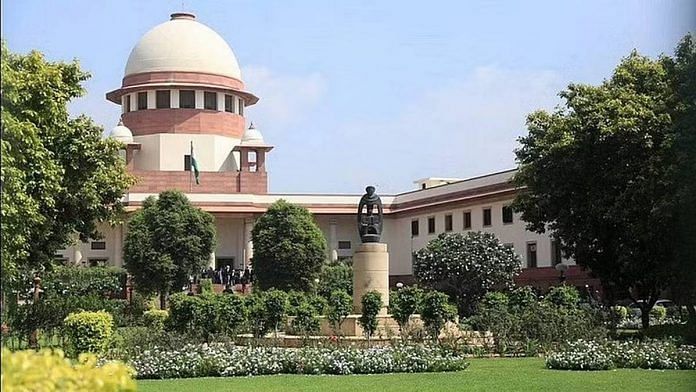New Delhi: The Supreme Court collegium sent a list of eight recommendations last week to the Union government for appointments to high courts, including two names that were rejected in an earlier round of deliberations. They were reconsidered by the apex appointment panel on the central government’s request, ThePrint has learnt.
The SC collegium on high court appointments is led by Chief Justice of India D.Y. Chandrachud, with Justices Sanjay Kishan Kaul and K.M. Joseph as the other two members. The latest list of eight names, including three women, have been recommended for elevation as judges in five different high courts — Manipur, Andhra Pradesh, Guwahati, Bombay, and Karnataka.
Amongst the eight fresh names, seven are judicial officers and one is an advocate. Additionally, the collegium reiterated advocate Nagendra Ramachandra Naik’s name as a judge in the Karnataka High Court for the third time.
Two of the eight names in this list were not in the previously submitted list. They were reconsidered and cleared by the collegium after the body received their files back from the central government for “positive reconsideration”.
“Since the government had its own inputs and the same did not match the SC collegium’s view, the government decided to send the names back to the judges’ panel for a positive reconsideration,” a source told ThePrint on the condition of anonymity.
The central government had sent back six such names to the top court collegium last year, sources in the know told ThePrint. The six names had been cleared by the respective high courts but did not receive a green signal from the SC collegium for reasons that were not spelt out to the government.
The collegium met on 11 January and discussed three of the six names, of which two belonged to the same HC as their proposed elevation. While it approved those two names, the panel reiterated its decision not to clear the third one.
The government started seeking “positive reconsideration” in 2020. “In some cases, the collegium accepted our view and has cleared the names,” a senior government official said.
Also Read: SC raps Modi govt for delaying judges’ transfers — ‘indicates other factors coming into play’
How govt gets a say
According to the Memorandum of Procedure (MoP) — the rulebook for making appointments to the higher judiciary — the process to appoint judges to a high court is initiated by the collegium of that very HC. This three-member collegium is headed by the Chief Justice of that HC and the other two members are the next two senior-most judges.
A list of suitable candidates is then forwarded to the central government as well as the SC collegium. However, the SC collegium cannot deliberate on these candidates until it receives the files from the government with inputs from the Intelligence Bureau (IB) on the background of the proposed names.
Once the files are sent to the SC collegium, the body calls for opinions from consultee judges on each name suggested by the HC collegium. A consultee judge is a serving SC judge who hails from that state or has earlier worked in that HC for which recommendations are made.
Based on the inputs received from the government and consultee judges, the SC collegium finalises the names and forwards them to the central government for their notification as judges.
However, the MoP allows the government to seek reconsideration of the proposed names and send the files back to the SC collegium. Per the set of guidelines on appointments, if the collegium reiterates a candidate’s recommendation, then the government is bound to appoint that person as a judge.
Another source privy to the process told ThePrint that reconsideration can be both “positive and negative”.
“Since the MoP gives us the room to urge the collegium to have a relook at its recommendation, it is not necessary that it has to be in cases that have been cleared by the appointment panel. The same can be for those names that have been rejected also,” the source explained.
According to the source, the government reserves the right to retain a rejected file or send it back to the HC concerned.
“If the government has inputs to suggest that the HC collegium’s approval was correct and the rejection by the SC collegium was not, then it can ask the top appointment body to review its decision,” said the source.



